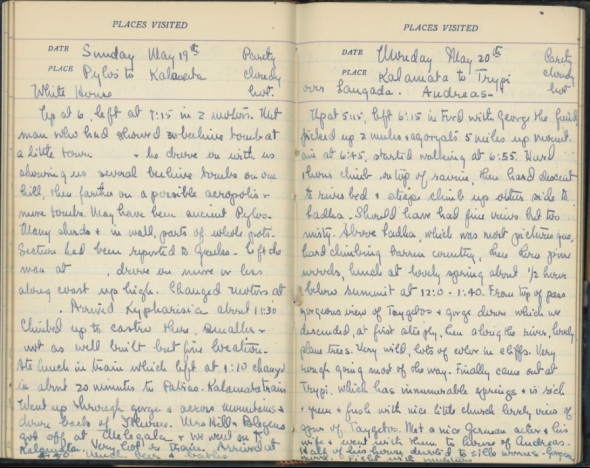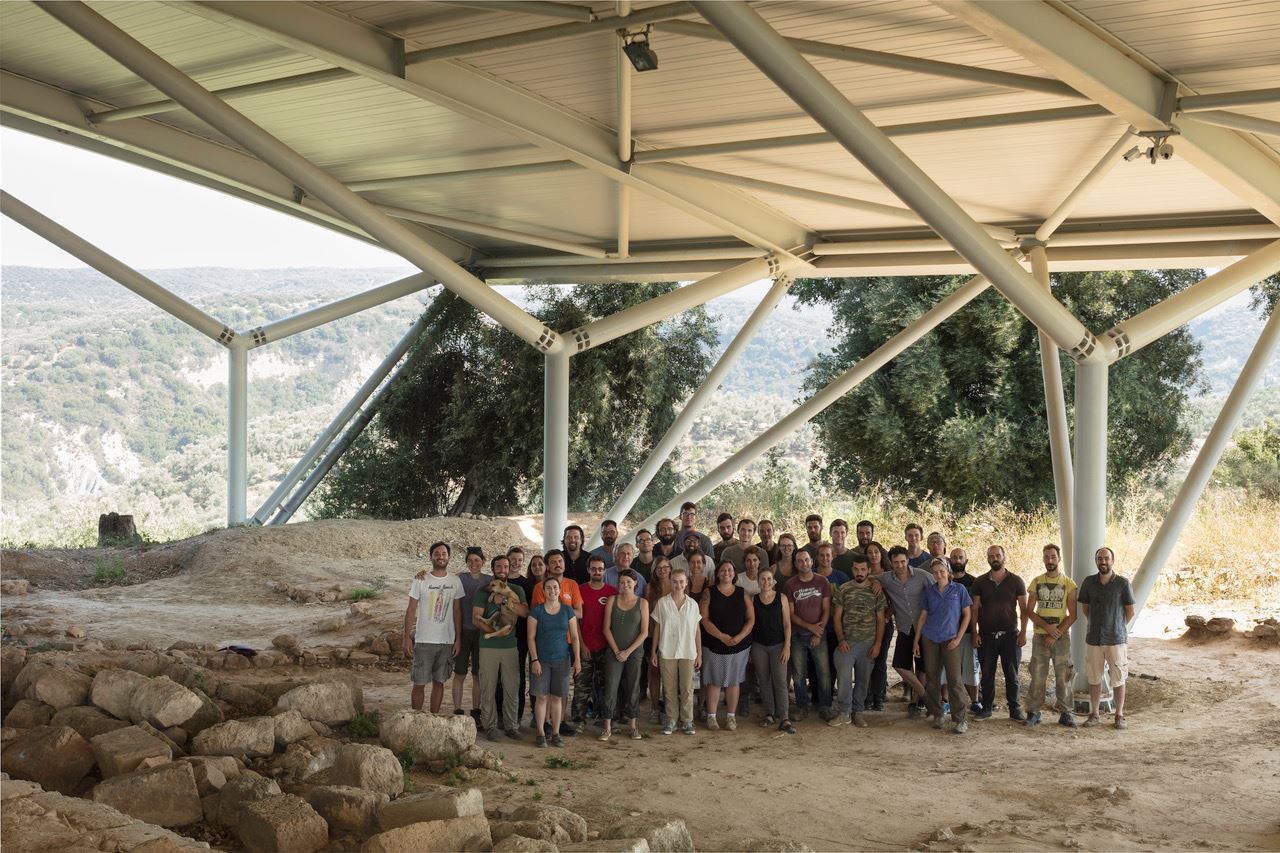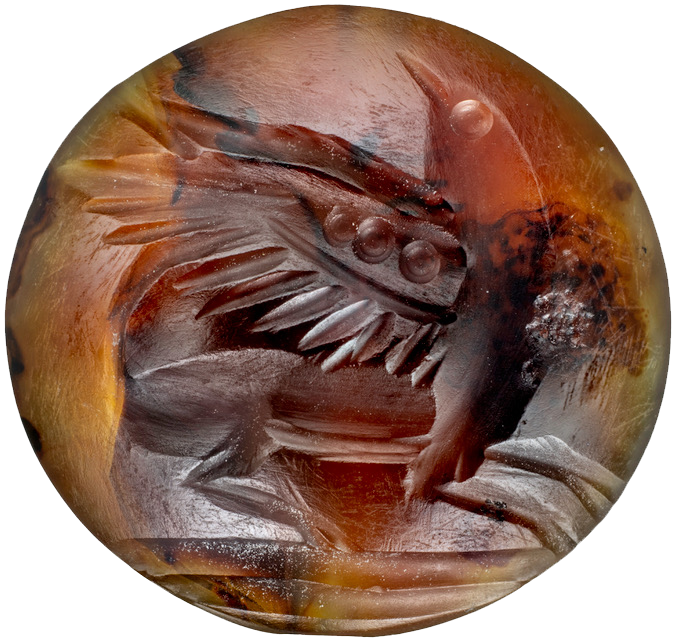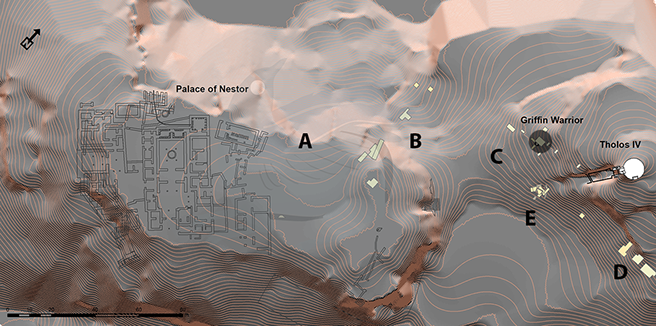Excavations
Although the current project has been operating at the site since 2015, the Palace of Nestor has been the focus of archaeological excavations for much longer. As each excavation season passes, the story of the area continues to unfold.
1912
North of the bay of Navarino, the Greek Archaeological Service’s Dr. Konstantinos Kourouniotis and his team excavate a tholos tomb.
1926
Kourouniotis and his team excavate a tholos tomb similar to the one first excavated in 1912. During this second tholos excavation, they notice surface-level indications of additional tombs in the area.
1938
In a joint Hellenic-American expedition, Kourouniotis, Dr. Carl W. Blegen of the University of Cincinnati, and their team briefly survey the region. They conclude that the high number of royal tombs in the area indicated a nearby palace.
1939
With the help of local residents, namely Charalambos Christophilopoulos of Koryfasio, the joint expedition finds seven or eight Mycenaean sites in ten days.
April 4, 1939
The team begins a trial excavation on the most striking site, Epano Englianos, a hill that has a comprehensive view of the area and contains two masses of concrete-like debris. On the first day, they find stone walls, fragments of frescoes, stucco floors, five inscribed tablets, and Mycenaean pottery. Throughout the season, they uncover more than six hundred tablets and fragments containing Linear B script. It is clear they have found the palace.
1940
WWII prevents an intended second excavation season at the palace.
1945
Kourouniotis passes away, and Professor Spyridon Marinatos is named as his replacement. Marinatos will go on to prefer working on sites surrounding the palace, leaving the palace excavation and cleaning to the Cincinnati team.
1952 - 1966
Across fifteen excavation seasons, the Cincinnati team uncovers the Palace of Nestor and the adjacent acropolis.
1960 - 1961
During the winter, the Greek Archaeological Service builds a metal roof over the palace so that out-of-season it can remain uncovered for visitors.
1990s
The Pylos Regional Archaeological Project (PRAP) is formed to reexamine the area and the original finds, particularly in order to determine the size of the surrounding Mycenaean town. The University of Minnesota’s Minnesota Archaeological Researches in the Western Peloponnese (MARWP) prepare a complete architectural plan of the palace remains.
1991 - 1995
Through PRAP, 30 km² in the area are reexamined and 40 km² are explored for the first time.
2015
Directors Jack Davis and Sharon Stocker and their team begin excavations again in the area near the palace, starting in the Tsakonas Field. On the first day of excavations, they discover the grave of the Griffin Warrior.
May - June 2015
The current project carries out excavations at a Mycenaean site near the town of Romanou a few kilometers down the road from the palace.
2015 - 2017
Excavations continue in Tsakonas Field, the area in which the Griffin Warrior Tomb was found.
June 12, 2016
A new protective roof with a raised walkway over the palace is unveiled.
2017
The current project returns to work in an area that was originally excavated in part by Marion Rawson on the acropolis beside the palace.
2018
While still processing the finds from the Griffin Warrior, in an incredible stroke of luck, the team makes another monumental discovery: a pair of tholos tombs.
2018 - 2019
Finds from the Griffin Warrior, including the three gold rings, are displayed publicly for the first time as part of “Mycenae: The Legendary World of Agamemnon” at the Badisches Landesmuseum in Karlsruhe, Germany.












